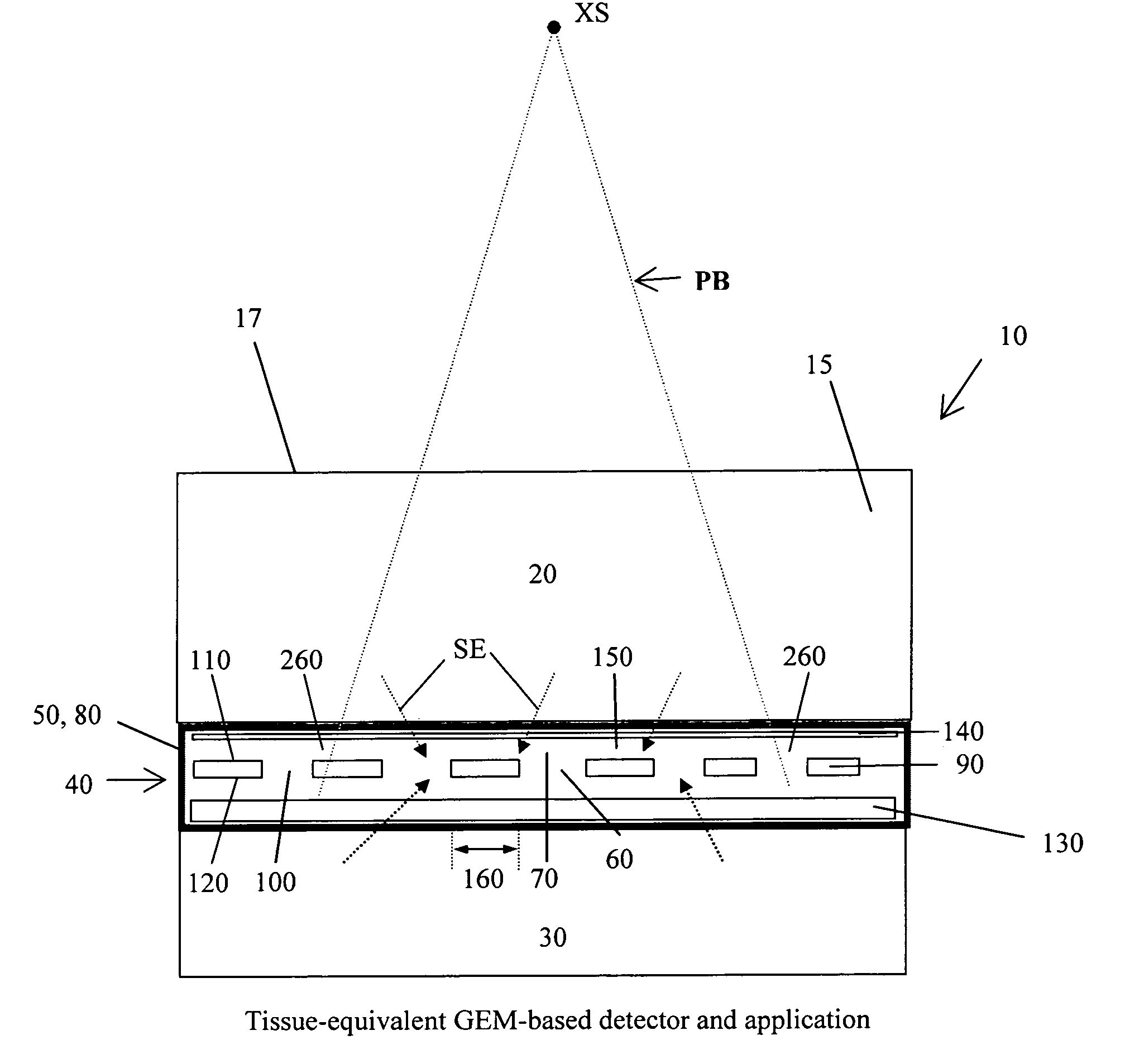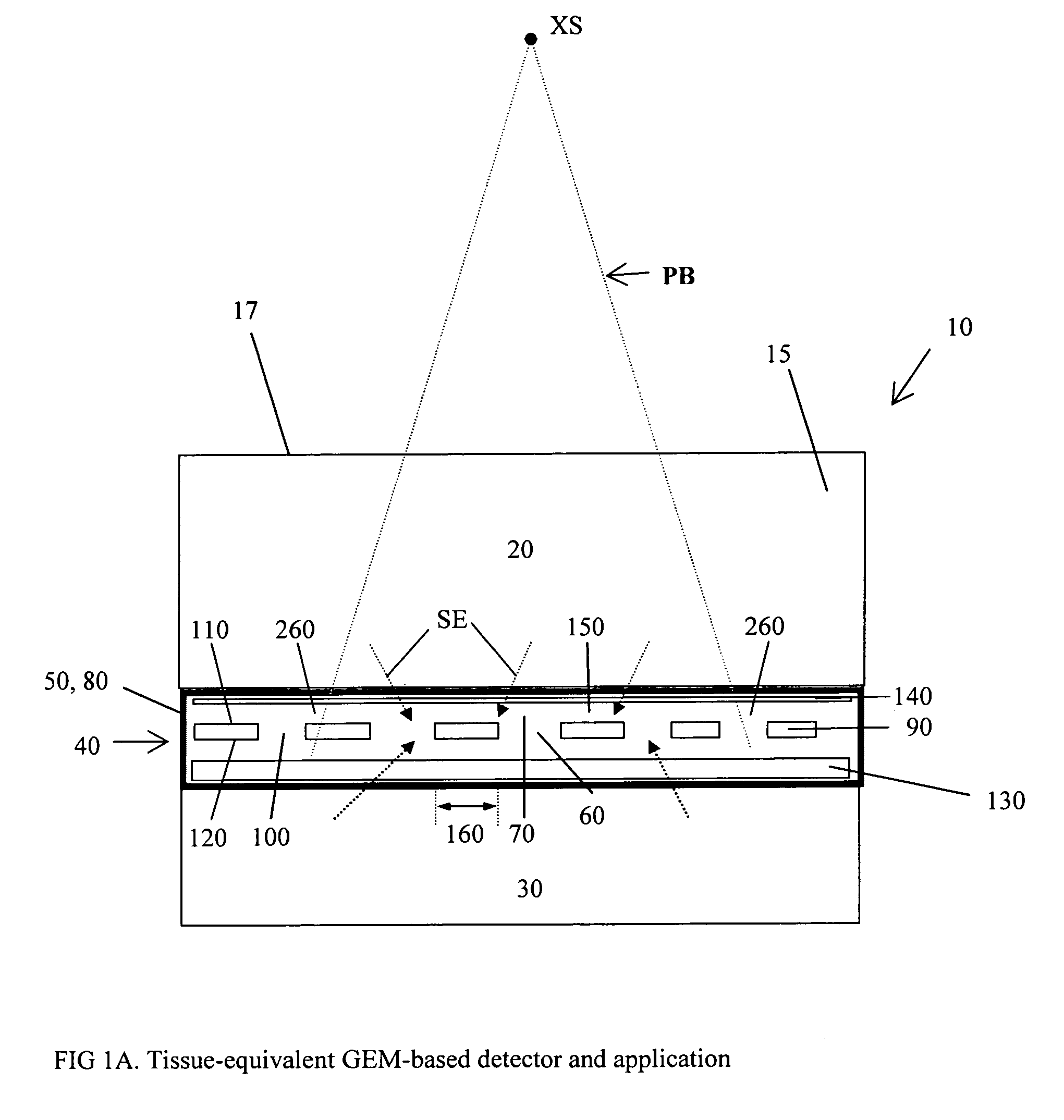Dosimeter based on a gas electron multiplier for dose measurements of therapeutic radiation
a radiation dose and electron multiplier technology, applied in the field of radiation detectors, can solve the problems of increasing the dose, increasing the chance of irreversible damage, and generating a non-uniform dose distribution, so as to achieve rapid dose gradient, the effect of reducing the chance of cure by a factor of two or thr
- Summary
- Abstract
- Description
- Claims
- Application Information
AI Technical Summary
Benefits of technology
Problems solved by technology
Method used
Image
Examples
example i
[0047]Referring now more particularly to FIG. 2, depicted therein is a graph of five dose distributions obtained by computational simulation using a Monte Carlo Particle transport technique (Brown et al.; MCNP—A General Monte Carlo N-Particle Transport Code, Version 5 Volume II: User's Guide; Los Alamos National Laboratory, distributed by the RSICC of the Oak Ridge National Laboratory (2003)). For this simulation, 5 cm thick top build-up phantom layer 20 and bottom backup phantom layers 30 were modeled. Phantom layers 20, 30 comprised water (H2O). Tissue-equivalent GEM layer 90 comprised a thickness of 50 microns, wherein tissue-equivalent GEM layer 90 was coated with copper comprising a thickness of 5 microns on each side of GEM layer 90 on surfaces 110, 120. Tissue-equivalent GEM layer 90 comprised a polyimide film, such as KAPTON (registered trademark of E.I. DuPont de Nemours and Company), having a density of 1.42 g / cc and comprising an elemental composition in weight percent of...
PUM
 Login to View More
Login to View More Abstract
Description
Claims
Application Information
 Login to View More
Login to View More - R&D
- Intellectual Property
- Life Sciences
- Materials
- Tech Scout
- Unparalleled Data Quality
- Higher Quality Content
- 60% Fewer Hallucinations
Browse by: Latest US Patents, China's latest patents, Technical Efficacy Thesaurus, Application Domain, Technology Topic, Popular Technical Reports.
© 2025 PatSnap. All rights reserved.Legal|Privacy policy|Modern Slavery Act Transparency Statement|Sitemap|About US| Contact US: help@patsnap.com



